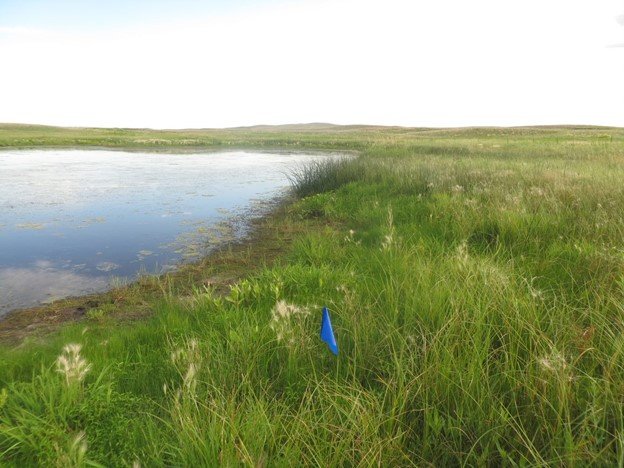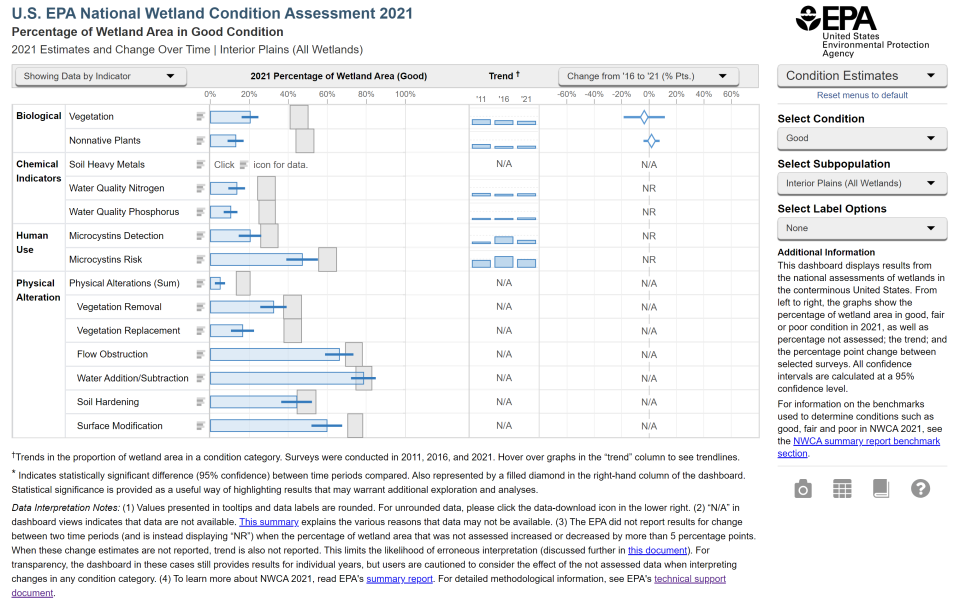Interior Plains Ecoregion - National Wetland Condition Assessment Results
Key Results
An estimated 13,045,113 acres of wetland in the Interior Plains ecoregion are represented in the National Wetland Condition Assessment (NWCA).
The NWCA assesses a number of indicators to assess the health of wetlands.
- 20% of wetland area rated good for the vegetation indicator and 13% rated good for the nonnative plant indicator.
- One of the most widespread stressors was the cumulative physical alterations indicator with 68% of wetland area rating poor. Vegetation replacement was the most widespread individual physical alterations indicator, with 58% of wetland area rating poor.
- Nutrients are an essential part of a wetland ecosystem, however excess nutrients can be detrimental. The NWCA found that 25% of wetland area rated poor for nitrogen and 32% rated poor for phosphorus. Since many wetlands do not have surface water throughout the year, these indicators could not be assessed for 53% of wetland area.

Change from 2016*
- The NWCA reports that the percent of wetland area in good condition for the vegetation indicator decreased by 4 percentage points. Wetland area rating poor for nitrogen decreased by 13 percentage points.
To access more ecoregional specific information, please visit the interactive NWCA Dashboard.
* The change analysis is based on information from two points in time – 2016 and 2021.

